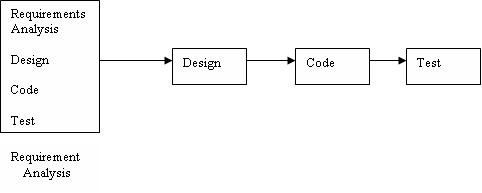The prototyping model is applied when detailed information related to input and output requirements of the system is not available. In this model, it is assumed that all the requirements may not be known at the start of the development of the system. It is usually used when a system does not exist or in case of a large and complex system where there is no manual process to determine the requirements. This model allows the users to interact and experiment with a working model of the system known as prototype. The prototype gives the user an actual feel of the system.
At any stage, if the user is not satisfied with the prototype, it can be discarded and an entirely new system can be developed. Generally, prototype can be prepared by the approaches listed below.
• By creating main user interfaces without any substantial coding so that users can get a feel of how the actual system will appear.
• By abbreviating a version of the system that will perform limited subsets of functions.
• By using system components to illustrate the functions that will be included in the system to be developed .
Using the prototype, the client can get an actual feel of the system. So, this case of model is beneficial in the case when requirements cannot be freezed initially.
This prototype is developed based on the currently known requirements. Development of the prototype obviously undergoes design, coding, and testing, but each of these phases is not done very formally or thoroughly.
By using this prototype, the client can get an actual feel of the system, because the interactions with the prototype can enable the client to better understand the requirements of the desired system.

Prototyping is an attractive idea for complicated and large systems for which there is no manual process or existing system to help determine the requirements. Risks associated with the projects are being reduced through the use of prototyping. The development of the prototype typically starts when the preliminary version of the requirements specification document has been developed.
At this stage, there is a reasonable understanding of the system and its needs are unclear or likely to change. After the prototype has been developed, the end users and clients are given an opportunity to use the prototype.
They provide feedback to the developers regarding the prototype: what is correct, what needs to be modified, what is missing, what is not needed, etc. Based on the feedback, the prototype is modified to incorporate some of the suggested changes that can be done easily, and then the users and the clients are again allowed to use the system.
This cycle repeats until, in the judgment of the prototypes and analyst. Based on the feedback, the initial requirements are modified to produce that final requirements specification, which is then used to develop the production quality system.
Figure Illustrates the steps carried out in the prototyping model. These steps are listed below.

1. Requirements gathering and analysis: A prototyping model begins with requirements analysis and the requirements of the system are defined in detail. The user is interviewed in order to know the requirements of the system.
2. Quick design: When requirements are known, a preliminary design or quick design for the system is created. It is not a detailed design and includes only the important aspects of the system, which gives an idea of the system to the user. A quick design helps in developing the prototype.
3. Build prototype: Information gathered from quick design is modified to form the first prototype, which represents the working model of the required system.
4. User evaluation: Next, the proposed system is presented to the user for thorough evaluation of the prototype to recognize its strengths and weaknesses such as what is to be added or removed. Comments and suggestions are collected from the users and provided to the developer.
5. Refining prototype: Once the user evaluates the prototype and if he is not satisfied, the current prototype is refined according to the requirements. That is, a new prototype is developed with the additional information provided by the user. The new prototype is evaluated just like the previous prototype. This process continues until all the requirements specified by the user are met. Once the user is satisfied with the developed prototype, a final system is developed on the basis of the final prototype.
6. Engineer product: Once the requirements are completely met, the user accepts the final prototype. The final system is evaluated thoroughly followed by the routine maintenance on regular basis for preventing large-scale failures and minimizing downtime.
Various advantages and disadvantages associated with the prototyping model are listed in Table.
Table Advantages and Disadvantages of Prototyping Model
Advantages | Disadvantages |
|
|
